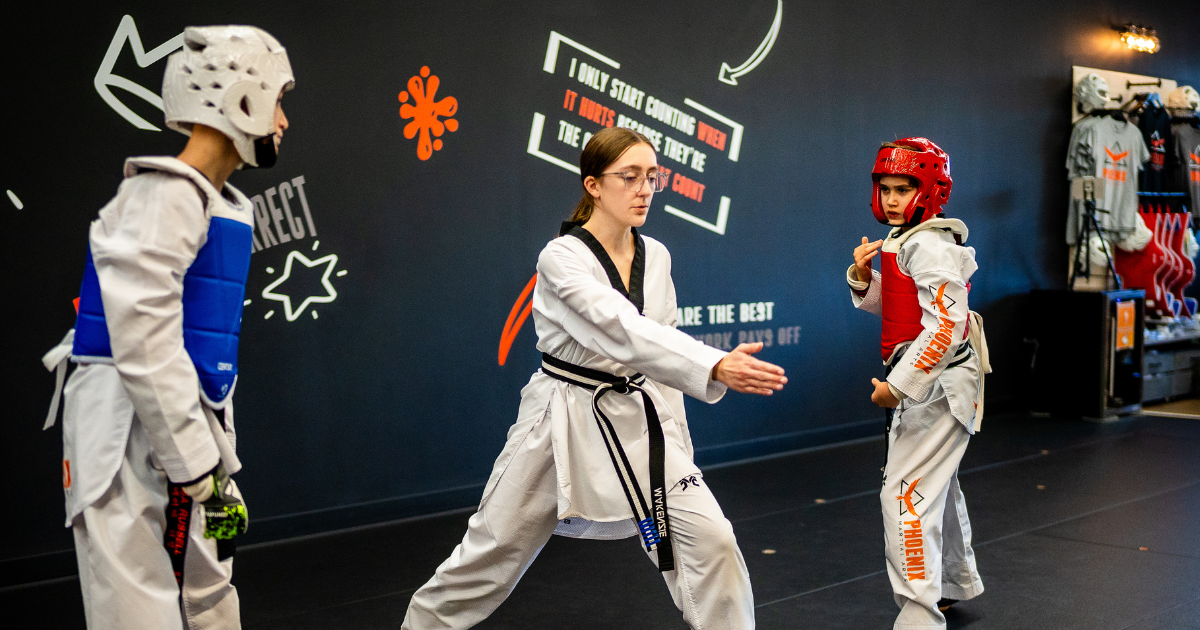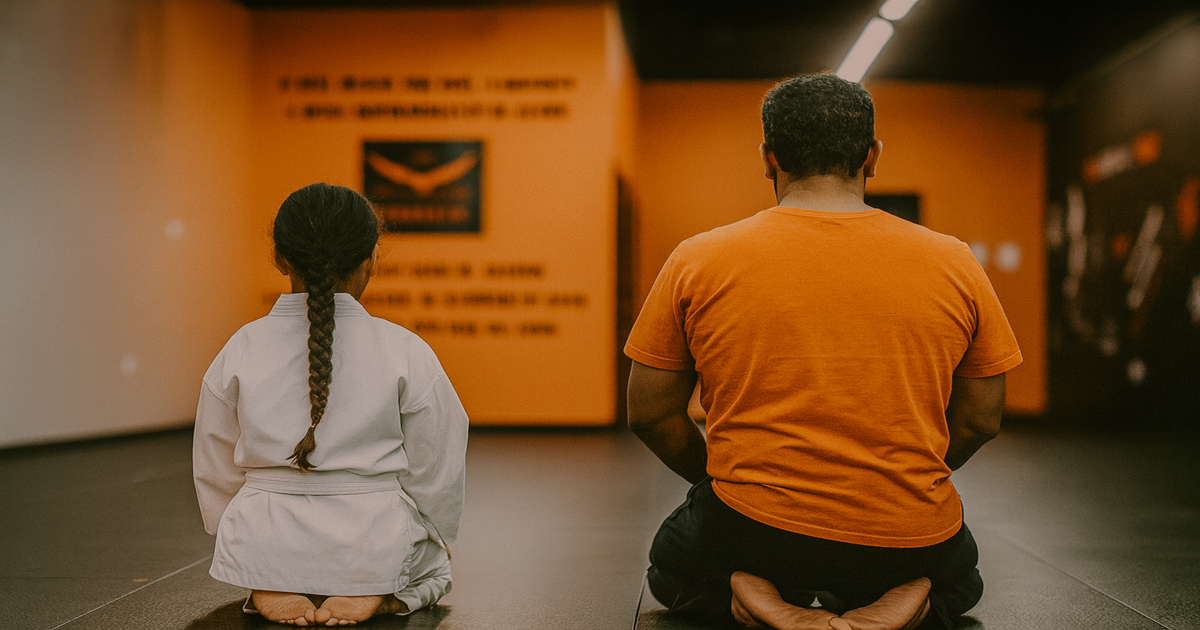How to Build Mental Toughness in Kids with These 4 Secrets That No One Tells You
Do you want your kids to grow up to be Successful, Happy, and Fulfilled?

Do you want them to make a positive impact in the world and lead others to greatness?
If you answered yes, then you need to help them develop two of the most essential skills for leaders in the 21st century: creativity and innovation.
One of the key factors that influence creativity and innovation is mental toughness. Mental toughness is the ability to cope with challenges, overcome obstacles, and achieve goals. It is the quality that separates the winners from the losers, the leaders from the followers, and the legends from the ordinary. It is also the key to happiness and fulfillment, as it helps us deal with stress, adversity, and uncertainty.
But how do you build mental toughness in your kids? How do you help them develop the mindset, the habits, and the skills that will make them strong, resilient, and confident? How do you prepare them for the challenges and opportunities that await them in the future?
That's what this article is all about. I'm going to share with you four proven strategies that I have used to build mental toughness in my own kids, and that I have taught to thousands of parents and kids as a 4th Degree Taekwondo Black Belt and a success coach for kids. These strategies are:
• Setting goals
• Practicing discipline
• Embracing failure
• Cultivating gratitude
By applying these strategies, you will not only help your kids build mental toughness, but also boost their creativity, innovation, and leadership skills. You will also strengthen your bond with them, and have fun along the way. Are you ready? Let's get started!
How to Build Mental Toughness in Kids by Setting Goals
The first strategy to build mental toughness in your kids is to help them set goals. Goals are the targets that we aim for, the outcomes that we desire, and the dreams that we pursue. They give us a clear direction, a sense of purpose, and a measure of progress. They also motivate us to take action, to overcome challenges, and to achieve results.
Setting goals is one of the most powerful ways to build mental toughness in your kids, as it helps them develop a vision for their future, a plan for their present, and feedback for their past. It also helps them develop a growth mindset, which is the belief that abilities can be developed through effort and learning.
But how do you help your kids set goals? Here are some tips that I have found to be effective:
• Help them identify their interests, passions, and strengths. Ask them what they enjoy doing, what they are good at, and what they want to learn more about. Help them discover their talents and potentials, and encourage them to pursue them.
• Help them set SMART goals. SMART stands for Specific, Measurable, Achievable, Relevant, and Time-bound. These are the criteria that make a goal effective and realistic. For example, instead of saying "I want to be a better reader", a SMART goal would be "I want to read 10 books by the end of the year".
• Help them break down their goals into smaller and manageable steps. This will help them avoid feeling overwhelmed and discouraged, and help them focus on the process and not just the outcome. For example, instead of saying "I want to learn how to play the guitar", a smaller step would be "I want to learn how to play one song by the end of the month".
• Help them track their goals and celebrate their achievements. This will help them monitor their progress, evaluate their performance, and adjust their strategies as needed. It will also help them recognize their efforts, appreciate their results, and reward themselves. For example, you can use a chart, a journal, or an app to keep track of their goals, and you can celebrate their achievements with a certificate, a gift, or a special activity.
One of the examples of how I helped my kids set goals was when my son wanted to join the recreational soccer team. He was passionate about soccer, but he was not very skilled or confident. So, we set a SMART goal for him: to improve his soccer skills and do well on the team by the end of the semester. We broke down the goal into smaller steps, such as practicing every day, doing ladder drills, and watching professional games. We also tracked his progress and celebrated his achievements, such as scoring a goal, winning a game, and getting positive feedback. By the end of the season, he had improved his skills, did well on the team, and gained confidence.
How to Build Mental Toughness in Kids by Practicing Discipline
The second strategy to build mental toughness in your kids is to help them practice discipline. Discipline is the ability to control our impulses, emotions, and actions. It is the skill that enables us to follow our plans, stick to our routines, and resist distractions and temptations. It is also the habit that strengthens our willpower, self-control, and focus.
Practicing discipline is one of the most effective ways to build mental toughness in your kids, as it helps them develop a sense of responsibility, accountability, and integrity. It also helps them develop a growth mindset, which is the belief that abilities can be developed through effort and learning.
But how do you help your kids practice discipline? Here are some tips that I have found to be helpful:
• Help them create and follow routines. Routines are the schedules and patterns that we follow on a daily, weekly, or monthly basis. They help us organize our time, prioritize our tasks, and manage our energy. They also help us create consistency, stability, and predictability in our lives. For example, you can help your kids create and follow routines for their morning, afternoon, and evening, such as waking up, getting ready, doing homework, playing, and sleeping.
• Help them manage their time and avoid distractions. Time management is the skill that helps us plan, allocate, and use our time effectively and efficiently. It helps us accomplish our goals, meet our deadlines, and balance our responsibilities. Distractions are the things that interrupt, divert, or interfere with our attention and focus. They can be internal, such as thoughts, feelings, or urges, or external, such as noises, people, or devices. For example, you can help your kids manage their time and avoid distractions by using a calendar, a timer, or a planner, and by limiting or eliminating their exposure to social media, video games, or TV.
• Help them develop positive habits and resist negative habits. Habits are the actions that we do repeatedly and automatically, without much thought or effort. They are the result of our repeated choices and behaviors, and they shape our character and destiny. Positive habits are the ones that support our goals, values, and well-being, such as reading, exercising, or meditating. Negative habits are the ones that hinder our goals, values, and well-being, such as smoking, procrastinating, or complaining. For example, you can help your kids develop positive habits and resist negative habits by using cues, rewards, and repetition, and by replacing bad habits with good habits.
One of the examples I drew from on how to practice discipline was when my sister wanted to improve her grades. She was smart and motivated, but she was also easily distracted and disorganized. So, my parents helped her create and follow routines for her study time, such as setting a specific time, place, and duration for her homework and revision. We also helped her manage her time and avoid distractions, such as using a planner, a timer, and a do-not-disturb sign, and by turning off her phone, TV, and music. They also helped her develop positive habits and resist negative habits, such as reviewing her notes every day, asking for help when needed, and rewarding herself for her efforts. By the end of the term, she had improved her grades, her study skills, and her self-esteem.
How to Build Mental Toughness in Kids by Embracing Failure
The third strategy to build mental toughness in your kids is to help them embrace failure. Failure is the state or condition of not meeting a desired or intended objective. It is the opposite of success, and it is often associated with negative emotions, such as disappointment, frustration, or regret. It is also the source of learning and improvement, as it helps us discover what works and what doesn't, what we need to change and what we need to keep. It is also the indicator of progress and growth, as it shows that we are trying, experimenting, and learning.
Embracing failure is one of the most important ways to build mental toughness in your kids, as it helps them develop resilience, perseverance, and learning. It also helps them develop a growth mindset, which is the belief that abilities can be developed through effort and learning.
But how do you help your kids embrace failure? Here are some tips that I have found to be useful:
• Help them redefine failure. Failure is not a permanent or personal state, but a temporary and situational feedback. It is not a reflection of who we are, but of what we do. It is not a dead end, but a detour. It is not a problem, but an opportunity. For example, you can help your kids redefine failure by using positive and constructive language, such as "You didn't fail, you learned", "You didn't lose, you gained", or "You didn't make a mistake, you made a discovery".
• Help them learn from failure. Failure is a teacher, a coach, and a mentor. It teaches us valuable lessons, coaches us to improve our skills, and mentors us to achieve our goals. It also helps us develop a growth mindset, which is the belief that abilities can be developed through effort and learning.
• Help them learn from failure by asking them reflective questions, such as "What did you learn from this experience?", "What can you do differently next time?", or "How can you use this feedback to improve your performance?".
• Help them cope with failure. Failure is an emotion, a feeling, and a reaction. It can trigger negative emotions, such as disappointment, frustration, or regret. It can also trigger positive emotions, such as curiosity, determination, or gratitude. It depends on how we interpret and respond to it. For example, you can help your kids cope with failure by acknowledging their emotions, validating their feelings, and supporting their actions. You can also help them reframe their failure as a challenge, an opportunity, or a gift.
One of the examples of how I helped my kids embrace failure was when my son Elijah wanted to learn how to ride a bike. He was excited and eager, but he was also scared and nervous. He fell many times, scraped his knees, and bruised his ego. He felt like giving up, but he didn't. He kept trying, learning, and improving. He also kept smiling, laughing, and enjoying. He eventually learned how to ride a bike, and he was proud and happy.
How to Build Mental Toughness in Kids by Cultivating Gratitude
The fourth and final strategy to build mental toughness in your kids is to help them cultivate gratitude. Gratitude is the feeling and expression of appreciation, thankfulness, and recognition. It is the attitude and practice of being aware of and grateful for the good things in our lives, such as people, events, or experiences. It is also the mindset and habit of finding and creating more good things in our lives, such as opportunities, solutions, or value.
Cultivating gratitude is one of the most beneficial ways to build mental toughness in your kids, as it helps them develop optimism, happiness, and well-being. It also helps them develop a growth mindset, which is the belief that abilities can be developed through effort and learning.
But how do you help your kids cultivate gratitude? Here are some tips that I have found to be helpful:
• Help them express gratitude. Gratitude is not only a feeling, but also an action. It is not enough to feel grateful, we also need to show it. We can express gratitude in different ways, such as saying thank you, writing a note, giving a hug, or making a gift. For example, you can help your kids express gratitude by encouraging them to thank the people who help them, support them, or inspire them, such as their family, friends, teachers, or mentors.
• Help them count their blessings. Counting our blessings is the act of recognizing and appreciating the good things in our lives, such as our health, our talents, our achievements, or our relationships. It helps us focus on what we have, rather than what we lack. It also helps us create a positive and abundant mindset, which attracts more good things into our lives. For example, you can help your kids count their blessings by asking them to name three things that they are grateful for every day, and to explain why they are grateful for them.
• Help them give back. Giving back is the act of sharing our time, energy, or resources with others who are in need, or who can benefit from them. It is a way of expressing our gratitude for what we have, and of creating more value for ourselves and others. It also helps us develop a sense of purpose, meaning, and fulfillment in our lives. For example, you can help your kids give back by involving them in charitable or volunteer activities, such as donating to a cause, helping a neighbor, or joining a community project.
One of the examples of how I helped my son cultivate gratitude was when he wanted to celebrate his birthday. He was grateful for his life, his family, and his friends, and he wanted to share his joy and gratitude with them. So, instead of asking for gifts, he asked for donations to a charity that he cared about. He also invited his friends to join him in a fun and meaningful activity, such as planting trees, cleaning a park, or visiting a nursing home. He had a wonderful birthday, and he made a positive difference in the world.
Conclusion
In conclusion, mental toughness is the ability to cope with challenges, overcome obstacles, and achieve goals. It is the quality that separates the winners from the losers, the leaders from the followers, and the legends from the ordinary. It is also the key to happiness and fulfillment, as it helps us deal with stress, adversity, and uncertainty.
As parents, we have the power and the responsibility to build mental toughness in our kids. We can do this by applying these four proven strategies:
• Setting goals
• Practicing discipline
• Embracing failure
• Cultivating gratitude
By doing this, we will not only help our kids build mental toughness, but also boost their creativity, innovation, and leadership skills. We will also strengthen our bond with them, and have fun along the way.
So, what are you waiting for? Start building mental toughness in your kids today, and watch them transform into the leaders of tomorrow!
I hope you enjoyed this article, and found it useful and informative. If you did, please share it with your friends and family, and leave a comment below. I would love to hear your feedback and suggestions. Thank you for reading, and have a great day!



